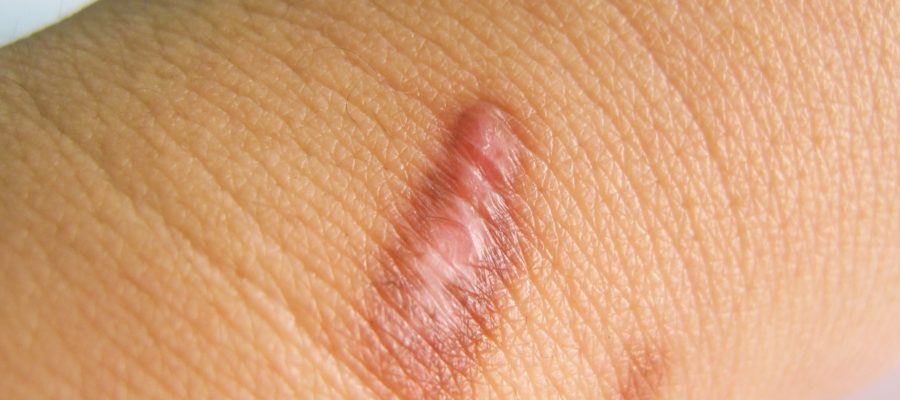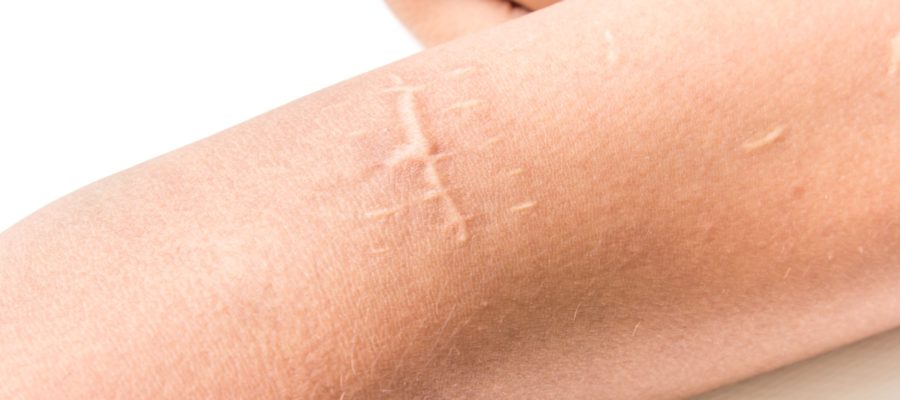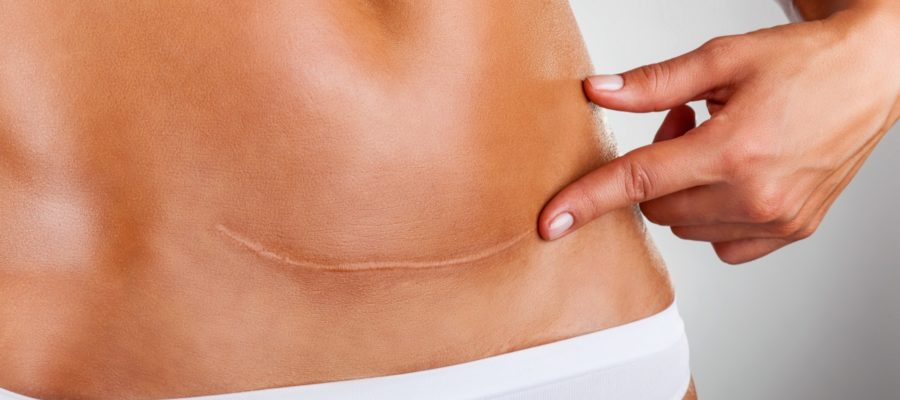A scar can be extremely disabling, both functionally and aesthetically, limiting the patient in daily life. The scar is the final outcome of the healing process of the skin.
However any surgery on a scar has an unpredictable outcome, due to the healing capacity. This is extremely variable among individuals and could also change during lifetime (e.g. hypertrophic scars are more common in the first two decades of life and during pregnancy).
A scar is considered pathological and deserves to be treated in the following cases:
- Hypertrophic scar or keloid
- Dystrophic scar area
- Scar contracture
- Depressed scars
- Unsatisfactory surgical scars
Hypertrophic scars or keloid
A hypertrophic scar consists in a erythematous, raised, thick and pruritic lesion that occur within the limits of a wound. When this process exceeds the limits of the wound is defined as a keloid.
The treatment could be summarized as follows:
- Steroids. They are injected into the hypertrophic scar or keloid, producing atrophy. 2-3 treatments at intervals of three weeks are usually required to solve hypertrophy and achieve a satisfactory aesthetic improvement.
- Surgery. This option should be carefully evaluated. In fact the risk of relapse is considerable. However this option should be considered over the second decade of life, when scar hypertrophy is less likely.
Medical conservative treatment of the scar consists in silicone sheets and silicone gel that can promote proper and aesthetic healing. This treatment could accompany steroids and surgical excision.
Dystrophic scars
Major traumas and burns could produce extensive scarring. The treatment should be tailored to each case, depending on the anatomic site, extent and quality of the surrounding healthy skin.
The reconstructive options are briefly summarized as follows:
- Simple scar excision and direct closure. This is the simplest solution. This option is able to treat small scars or small dystrophic areas.
- Reconstruction with pre-expanded skin. This solution provides for the best skin quality. In fact the tissue used for the reconstruction is pre-expanded autologous skin, therefore similar to the surrounding healthy skin, for thickness, texture and appearance. To learn more about this topic consult the dedicated section.
- Dermal and skin substitutes. These consist of matrices of hyaluronic acid or collagen (human or animal) that are positioned with a surgical procedure over the area to be reconstructed. These substitutes are then inhabited by the cells of the host, thus regenerating a layer of tissue. To accelerate healing, it is possible to perform a second procedure of skin grafting, in order to restore a complete cutaneous layer. The quality of reconstruction with substitutes is inferior compared to cutaneous expansion, however it allows the reconstruction of large areas.
- Pedicled and free flaps. These surgical procedures allow to repair in one surgical procedure large defects with autologous tissue. The aesthetic outcome should be carefully considered. In fact this procedure should be indicated for wide dystrophic areas where expansion and skin substitutes are not applicable . A brief explanation of pedicled and free flaps follows:
- Pedicled flaps. Pedicled flaps consist in a portion of tissue supplied by a pedicle (usually an artery and vein). A pedicled flap may include not only skin but also fascia and muscle. This solution allows to reconstruct medium size areas. The flap could reasonably reconstruct defects as far as the length of the pedicle.
- Free flaps. This solution allows the reconstruction of large and distant defects. They may include skin, muscle or bone segments. The pedicle of the flap is cut and re-connected (in jargon anastomosed) to the vessels of the acceptor site. Requires the use of a microscope to connect the vessels and a longer operative time.
Scar contractures
Scar contractures are often the result of burns or extensive traumas. These contractures are able to impair movement of whole body parts, like neck and arms.
Z-plasty is a surgical technique that can easily solve this problem. This procedure elongate the scar and re-orient the tension line with two (single Z plasty) or more triangular flaps (multiple Z-plasty).
Depressed scars
Blunt traumas, bruises or surgery could produce depressed scars. Lipofilling addresses specifically this aesthetic defect. This technique allows to harvest the adipose tissue from the patient with a procedure similar to a liposuction. The adipose tissue is then processed with a particular process, then grafted with a simple injection under the depressed scar. This procedure is able to restore the normal contour and to improve scar texture. To explore this topic, click here.
Unsatisfactory surgical scars
Surgical scars could have an unsatisfactory appearance (excessive width - diastasis - hypertrophy or depression). This complication usually occurs when the physiologic healing is impeded by the onset of an infection or by an inadequate suture.
A surgical revision of the scar is possible: the scar is completely excised and the margins are sutured properly. The resulting scar is slightly longer. Methods, risks and benefits should be always discussed with the specialist to find the optimal solution for each case.



